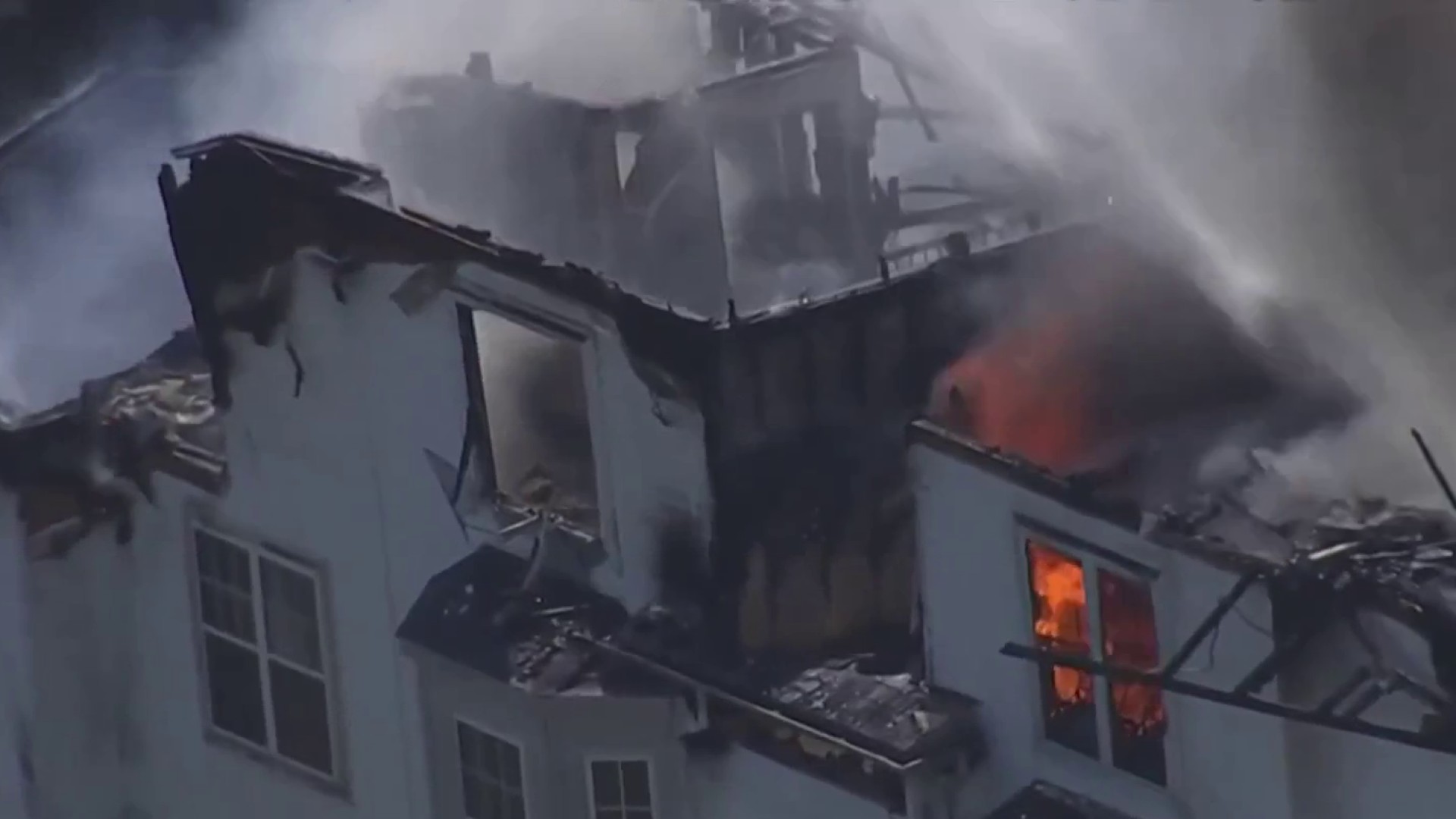Federal agents have recently recovered dozens of lost historic art pieces ordered and funded by the U.S. government during the Great Depression.
Investigators with the Inspector General’s office of the General Services Administration told the News4 I-Team they located a trove of Works Progress Administration artwork in the attic, basements and storage areas of some California libraries.
The 122 paintings were among an estimated 100,000 pieces of Works Progress Administration that have gone missing in the decades since their completion, according to an I-Team investigation.
Agents tracked some of the historic art -- including paintings by Sophie Brannan and Yoshida Sekido -- to an employee workroom and storage space in the Grand Avenue Branch of the South San Francisco Public Library.
In one case, a famed WPA painting of the Golden Gate Bridge was hiding in plain sight, hung a on a wall near some bookshelves.
General Services Administration Inspector General special agent Mike Ramos said the art had unknowingly languished at the library, without the knowledge of managers, because of the WPA’s sloppy record-keeping during the Depression era.
“Facilities close, administrations change and they lose track of the art," Ramos said.
Local
Washington, D.C., Maryland and Virginia local news, events and information
Weeks after the discovery in San Francisco, federal investigators also located a set of WPA artworks in the attic of a library in San Mateo, California, after receiving a tip, Ramos said.
Those pieces included a set of Galen Wolf watercolors. Most, if not all, of the recovered art pieces were produced by West Coast artists or depict West Coast scenes.
All Works Progress Administration art remains the property of the United States government. The General Services Administration and its Inspector General’s office authenticate and, if necessary, pay to restore the recovered paintings. The agencies often work to find a school, museum, library or other venue in which to hang the art, in close proximity to the location from which it was recovered.
At least nine other artworks were found by Ramos’ agents in San Diego. Each was confirmed to be an authentic piece of WPA art.
The agents are awaiting confirmation that 22 others they located in San Diego are also authentic.
Though WPA art can never be sold, Ramos estimates the recently located paintings would be worth about $3 million.
Beginning in 1935, the Works Progress Administration, which employed thousands of artists and paid some $42 a week for their work, produced artwork for public buildings. The paintings were distributed nationwide, and were catalogued in hand-kept records.
All but 20,000 of those pieces have since been lost, stolen or misplaced, according to the I-Team review. Efforts to recovery have been slowed by the lack of modern records and the loss of identifiable plaques and markers on the paintings themselves.
“I'm not sure things were catalogued or organized in those days," said Robert Erickson, acting inspector general of the General Services Administration. "People didn't put the value on them that they do today.”
Federal agents are actively searching for Works Progress Administration pieces, including a regular review of eBay and other websites in which items are traded or sold.
“If you go on eBay right now and search 'WPA,' you're going to get about 2,700 hits,” said General Services Administration Inspector General special agent Eric Radwick.
Knowingly selling or buying WPA work is a federal crime, because the paintings are forever considered property of the U.S. government.
Investigators said thefts have occurred, including some in recent years. “December in Venice," a famed WPA piece by artist Charles Polowetski , was stolen from the walls of the Mills Mansion in upstate New York in 2008.
Agents said a tourist who’d just signed the mansion’s guest book and placed $2 in a donation box is suspected of stealing the painting. It has not been recovered.
Federal agents said all WPA are techinically “priceless”, because they cannot be sold or purchased. But a recent appraisal found “14th Street at 6th Avenue," a landmark WPA painting by John Sloan portraying a New York City intersection amid the Depression, was worth an estimated $750,000.
Brian Miller, a former Inspector General for the General Services Administration, helped launch the agency’s efforts to recover the pieces. “Unfortunately, many of these pieces have been missing for decades," Miller said. "And (until now) people didn’t even know we were looking for them.”



